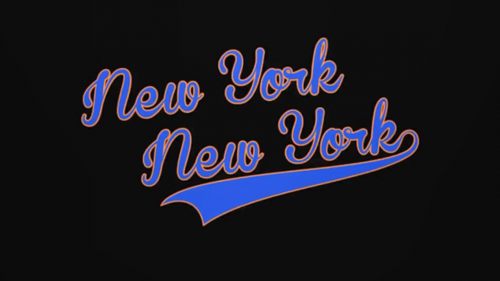Where Is THE GREAT GATSBY’S Valley Of Ashes Today?
The Valley of Ashes separates the moneyed world of Long Island and the glitzy world of Manhattan in The Great Gatsby. In Fitzgerald's novel it's a wasteland that is unchanging, from which the enmities of the lower classes spring upon the wealthy. In Baz Luhrmann's movie it's a desolate wasteland where the judgment of God is set in motion. It's a visually stunning depiction of working class ennui, unbroken by hope. Here's how Fitzgerald described it;
“This is the valley of ashes, a fantastic farm where ashes grow like wheat into ridges and hills and grotesque gardens; where ashes take the form of houses and chimneys and rising smoke and, finally, with a transcendent effort, of men who move dimly and already crumbling through the powdery air. Occasionally, a line of gray cars crawls along an invisible track, gives out a ghastly creak, and comes to rest, and immediately the ash-gray men swarm up with leaden spades and stir up an impenetrable cloud, which screens their obscure operations from your sight.”
And today it's gone. Growing up in Queens I was always fascinated by the idea that there had been a Valley of Ashes, but it didn't exist in the world I knew. Technically it never really existed; like East and West Egg, the Valley of Ashes is an invention of Fitzgerald's, but based on reality. The reality in this case was the Corona Ash Dump, or colloquialy Mount Corona. Located along the banks of the Flushing River, the Corona Ash Dump was where all of the city's ash waste went to die.
Back at the turn of the 20th century most furnaces were coal-burning, and that coal produced ash - which had to be sent somewhere. The ashes were dumped in ashcans, which were then picked up by the Brooklyn Ash Removal Company, who had the city contract to remove ash. At the time their solution to the ash waste problem was seen as modern and revolutionary; the ash wasn't dumped at sea or taken out of state, rather it was left, in the open air, in a marsh in Queens. "Reclaiming Marsh Lands" is how a New York Times article from 1907 put it.
Eventually those lands were very, very reclaimed, and by the time Fitzgerald wrote Gatsby in 1925 the Corona Ash Dump was an endless mountain range of refuse. Scavengers would pick through the surely carcinogenic ash, looking for any item of value that might have been inadvertently left with the refuse. The dump represented the very ugly face of modern life. What had been a beautiful, ecologically complex tidal marsh had become a dead zone.
But the Corona Ash Dump's days were numbered even when Fitzgerald wrote his book. In 1934 beloved Mayor Fiorello LaGuardia made the ash dump a public works project as it would be cheaper. After some legal tussles, the city acquired the land for just under three million dollars. It now owned all the Valley of Ashes, and the area was designated parkland. Which wasn't much help - it was still an ugly stretch of filth.
The Corona Ash Dump. Image courtesy Ephemeral New York.
The city had just the man for the job, though. He was Robert Moses, one of the great urbanizers of the 20th century. Moses' legacy is written in parks and highways across the face of New York City, and the Corona Ash Dump would end up being one of his enduring legacies. Moses was the Parks Commissioner of New York City, but he was also the executive of the Triborough Bride Authority as well as the chairman of the Long Island Park Commission, who was in charge of building the Grand Central Parkway. This all worked together: the Triborough Bridge was a project that would connect Queens, the Bronx and Manhattan, while the Grand Central Parkway was the highway that would bring commuters from Long Island through Queens to the bridge. And right there, along the path of the Parkway, was the Corona Ash Dump.
Moses made the Parkway come in through the western edge of the dump, which helped cut a swath through the ash. Some of the ash was used in the construction of the Parkway, helping keep the roadway level. Other ash was sent off to landfills, including the Staten Islan Landfill, which would be one day so large it could be seen from space. But this wasn't enough. What Moses was left with was a highway that cut through an ugly valley of ashes. It was difficult to find the money to actually turn the ash dump into the parkland which it had been designated.
The answer came soon after. A group of New Yorkers struck on the idea of celebrating the 150th anniversary of George Washington's first inauguration (which happened in New York City) with a World's Fair. The date would be 1939, and the money would be easier to find. And so Moses began the work of reclaiming the dust mountains that had reclaimed the parkland.
Moses operated in a way that is impossible to imagine today. He has been called 'tyrannical,' and he bullied and shoved his ideas through the state legislature with little thought to compromise. He followed his vision for the park at the expense of everyone else; at one point the city bought a few hundred extra acres around the ash dump and proceeded to evict everyone in the area, giving them only thirty days notice. That's actually impossible to imagine in the modern New York City, where every eminent domain claim is battled to within an inch of its life in courts (see what happened at Atlantic Terminal, now the home of the Nets). Moses' version of magnamity: he gave the people an extra thirty days to pick up their lives and scram.
What came from all of that remains one of the gems of Queens. Flushing Meadow-Corona Park is the second largest park in the city, bigger even than Central Park. It has been the home of two World's Fairs (1939 and 1964), as well as the Stark Expo in Iron Man 2. In it is the Billie Jean King National Tennis Center, home of the US Open. Citi Field is there, where the Mets play ball (they used to play in Shea Stadium, which was also in the park. The Beatles famously played there). Visitors to the Park can go to the Queens Museum of Art, where they can look at Dali paintings and crime scene photos from the history of the New York Daily News. The New York Hall of Science, with its towering Gemini-Titan and Mercury-Atlas rockets, is there. You can visit the Queens Zoo, New York's first specifically designed cageless zoo. Just steps away from the iconic Unisphere is the Queens Theater in the Park, which puts on dance performances and plays all summer long.
F. Scott Fitzgerald saw the Valley of Ashes as a veil that forever separated elements of America. His cynicism couldn't foresee what would happen with that land; in some ways Baz Luhrmann's movie version of The Great Gatsby has an optimism missing from the novel, but perhaps the very presence of the Flushing Meadow-Corona Park proves Luhrmann's point.



